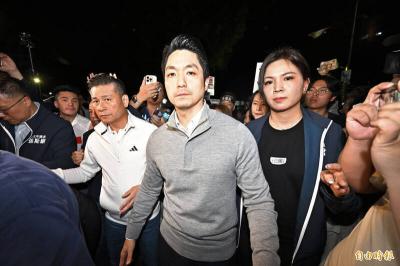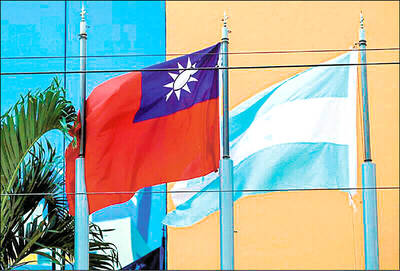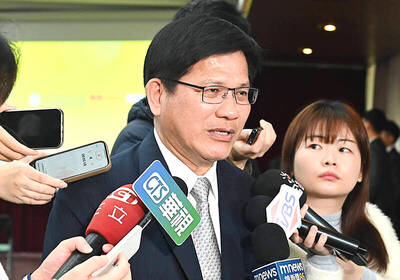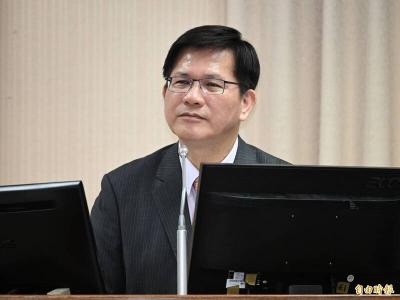Several civic groups yesterday criticized the Health Promotion Administration’s recently announced subsidy scheme for infertile couples seeking assisted reproductive technologies, saying it is cost-ineffective, poorly designed and will further force the traditional burden of involuntary childbearing onto women.
“Despite Taiwan’s relatively sophisticated assisted reproductive technologies, the average live birth rate per embryo transfer cycle over the past decade is merely 27 percent in this country, which means a reproductively challenged couple may have to undergo three to four rounds of in-vitro fertilization [IVF] to achieve a successful pregnancy,” Taiwan Women’s Link president Huang Sue-ying (黃淑英) told a press conference in Taipei yesterday.
Huang said based on the live birth rate, nearly NT$670 million (US$22.3 million), or 70 percent of the total funding of NT$940 million for the three-year scheme would be “wasted on failed IVF treatments.”
On average, each of the 4,000 babies that the administration expects would be born as the result of the scheme would cost the government as much as NT$235,000, Huang said.
“At a time when the country’s mammoth government debt continues to pile up, is it appropriate for the administration to squander taxpayers’ money like that?” Huang added.
Taiwan Occupational Safety and Health Link executive director Huang Yi-ling (黃怡翎) said many other factors aside from late marriage could cause fertility problems, such as overwork, long working hours and consumption of tainted foods.
“Sometimes, infertility problems can be addressed simply by cutting back on workload and adopting a healthier lifestyle or dietary habit. However, the subsidy project could prompt doctors to encourage women to jump straight into IVF without making the effort to change the way they live and work,” Huang Yi-ling said.
That could lead to the gradual “medicalization” of pregnancy in the country, and put women who are able to conceive naturally through the discomforts of IVF, which could put them at risk of ovarian hyperstimulation syndrome, premature labor and infections after fetal reduction, she said.
National Health Insurance Civic Surveillance Alliance spokesperson Eva Teng (滕西華) said infertility is not the only challenge facing young couples nowadays.
“The first stage of the subsidy scheme is to cover fertility-challenged couples from low and middle-income households, offering them a maximum subsidy of NT$100,000 per year. However, even if some of them are lucky enough to get pregnant, where can they find the money to get proper pregnancy checkups, feed their kids or pay for their tuition fees?” Teng said.
Teng said the subsidy scheme could also give the parents-in-law and spouses of women who have accepted their infertility an excuse to force or persuade them into receiving IVF treatments to fulfill their “traditional obligation” of carrying on their husbands’ family names.
Dismissing the criticism, Health Promotion Administration Director Chiu Shu-ti (邱淑媞) said the country has done a lot to help financially disadvantaged parents with the costs of raising their children, but little effort has been made to assist reproductively challenged couples in fulfilling their parenthood dream.
“While there are many women who do not want to have children, there are also people who have been forced to give up their hopes of being a mother due to financial reasons,” Chiu said.
Chiu said the funding for the scheme would be sourced solely from the surcharges on cigarette sales, adding: “What is so wrong about wanting to help these women achieve their dream of having babies?”

Several Chinese Nationalist Party (KMT) officials including Chairman Eric Chu (朱立倫) are to be summoned for questioning and then transferred to prosecutors for holding an illegal assembly in Taipei last night, the Taipei Police said today. Chu and two others hosted an illegal assembly and are to be requested to explain their actions, the Taipei City Police Department's Zhongzheng (中正) First Precinct said, referring to a protest held after Huang Lu Chin-ju (黃呂錦茹), KMT Taipei's chapter director, and several other KMT staffers were questioned for alleged signature forgery in recall petitions against Democratic Progressive Party (DPP) legislators. Taipei prosecutors had filed

Taiwan would welcome the return of Honduras as a diplomatic ally if its next president decides to make such a move, Minister of Foreign Affairs Lin Chia-lung (林佳龍) said yesterday. “Of course, we would welcome Honduras if they want to restore diplomatic ties with Taiwan after their elections,” Lin said at a meeting of the legislature’s Foreign Affairs and National Defense Committee, when asked to comment on statements made by two of the three Honduran presidential candidates during the presidential campaign in the Central American country. Taiwan is paying close attention to the region as a whole in the wake of a

NEW WORLD: Taiwan is pursuing innovative approaches to international relations through economics, trade and values-based diplomacy, the foreign minister said Taiwan would implement a “three-chain strategy” that promotes democratic values in response to US tariffs, Minister of Foreign Affairs Lin Chia-lung (林佳龍) said. Taiwan would aim to create a “global democratic value chain,” seek to capitalize on its position within the first island chain and promote a “non-red supply chain,” Lin was quoted as saying in the ministry’s written report to the Legislative Yuan submitted ahead of the legislature’s Foreign Affairs and National Defense Committee meeting slated for today. The Ministry would also uphold a spirit of mutual beneficial collaboration, maintaining close communication and consultations with Washington to show that Taiwan-US cooperation

Taiwan and the US have begun trade negotiations over tariffs imposed by US President Donald Trump earlier this month, Minister of Foreign Affairs Lin Chia-lung (林佳龍) said in an interview this morning before reporting to the Legislative Yuan’s Foreign Affairs and National Defense Committee. The Taipei Economic and Cultural Representative Office (TECRO), Taiwan’s de facto embassy in the US, has already established communication channels with the US Department of State and the US Trade Representative (USTR), and is engaging in intensive consultations, he said. Points of negotiation include tariffs, non-tariff trade barriers and issues related to investment, procurement and export controls, he